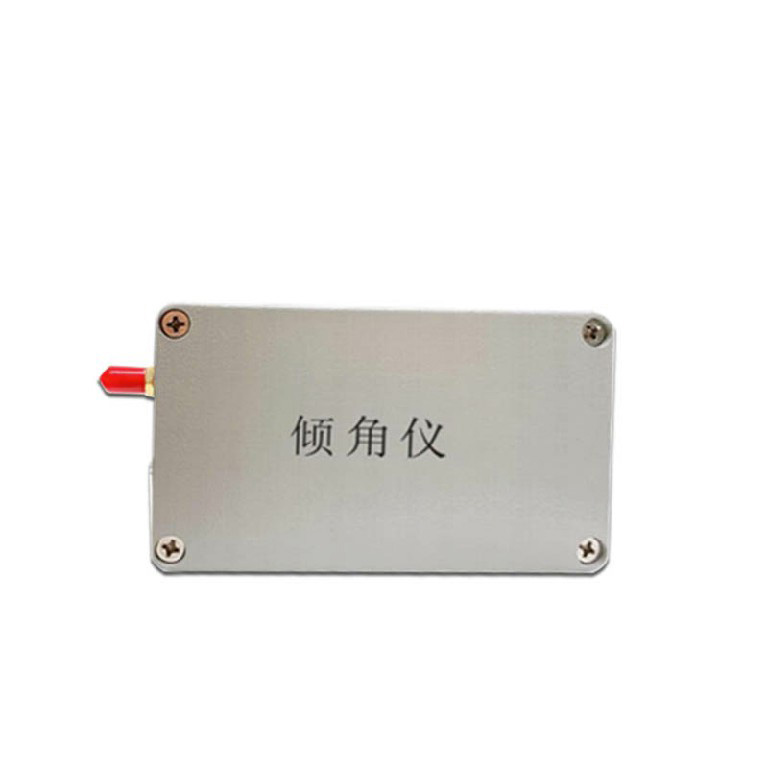Tianyi Sensor IOT Technology Co., Ltd
Sales Manager:Ms. Emily Wang
Cel,Whatsapp,Wechat:+86 15898932201
Email:info@fengtutec.com
Add:No. 155 Optoelectronic Industry Accelerator, Gaoxin District, Weifang, Shandong, China

Sales Manager:Ms. Emily Wang
Cel,Whatsapp,Wechat:+86 15898932201
Email:info@fengtutec.com
Add:No. 155 Optoelectronic Industry Accelerator, Gaoxin District, Weifang, Shandong, China

Model:FT-QJ1
Brand:tianyi
1.Introduction to Wireless Tilt Sensor Products
Wireless Tilt Sensor uses accelerometers to monitor and measure geological inclination, which is used to measure the tilt and tilt angle generated by geological hazards.Our company designed and developed an inclination meter based on the principles of high precision, low power consumption, stability and reliability.It can combine intelligent gateways, alarm equipment and IoT platforms to form a closed-loop system of geological disaster potential points, self-monitoring, self-analysis, and self-alarming.It is suitable for monitoring fields such as geological disasters, geotechnical engineering, construction engineering, transportation, water conservancy, and municipality, and is used for real-time monitoring of high-frequency structure vibrations and micro-tilt changes in geological disasters.
2.Product features of Wireless Tilt Sensor
(1) High integration: Integrates the MEMS acceleration module to realize the three-axis acceleration and three-axis inclination observation functions, and at the same time collects the ambient temperature for temperature compensation;
(2) Multi-communication: Converge 2/4G full-network public network communication, supports NB-IoT narrowband Internet of Things communication, supports LoRa local self-organized network communication, realizes local networking of monitoring equipment, early warning information area release, remote transmission of monitoring data, and remote control of equipment;
(3) Low power consumption: Adhering to the concept of high integration and low power consumption design, it realizes integrated integrated design of sensing, acquisition and communication, and the standby performance meets the long-term use needs in the field.It has convenient installation characteristics, and is especially suitable for emergency monitoring and deployment;
(4) High precision: adopt on-site redundant observation, based on the prior error and actual measurement error, embedded edge calculation, data filtering and data cleaning algorithms, realize coarse error removal and abnormal detection, ensure the reliability of monitoring data, and meet the requirements of relevant technical standards;
3.Technical parameters of Wireless Tilt Sensor
| Sensor performance | inclination | Range | ±90° |
| Accuracy | Accuracy: ±0.001/±0.005/±0.01 optional | ||
| Acceleration | Range | ±3g | |
| Accuracy | 0.5mg | ||
| Working conditions | Operating voltage | 3.7V~4.2V | |
| Rated power consumption | <120 mA/3.7V | ||
| Operating temperature | -40℃~85℃ | ||
| Working humidity | 95% RH non-condensing | ||
| Communication performance | Communication Network | 2~4GPRS/NB-IOT/LORA | |
| Collection interval | 1~50Hz high frequency or 0~7200s low frequency setting as required | ||
| Upload strategy | Timed upload + event trigger upload | ||
| Interactive control | support | ||
To achieve efficient crop production in greenhouses, it is essential to precisely control key environmental factors:Temperature: Different crops have specific optimal temperature ranges. Excessively high or low temperatures can hinder their growth.Air humidity: Too high air humidity easily triggers...
The Series power supply supporting UAV inspection is a special supporting equipment for UAV inspection of photovoltaic power plants, also known as Series power supply or UAV string power supply. Its core function is to convert alternating current into direct current and input it into the battery pan...
Tianyi specializes in the research, development and production of meteorological monitoring equipment, with profound technical strength and rich experience in the field of Automatic Farmland Weather Station. The weather stations produced by the company feature high-precision sensors and are made of...
The IV curve, or current-voltage curve, visually demonstrates the current output of a photovoltaic (PV) cell or module at different voltages. Through this curve, core parameters such as open-circuit voltage, short-circuit current, and maximum power point can be obtained. These parameters are crucial...